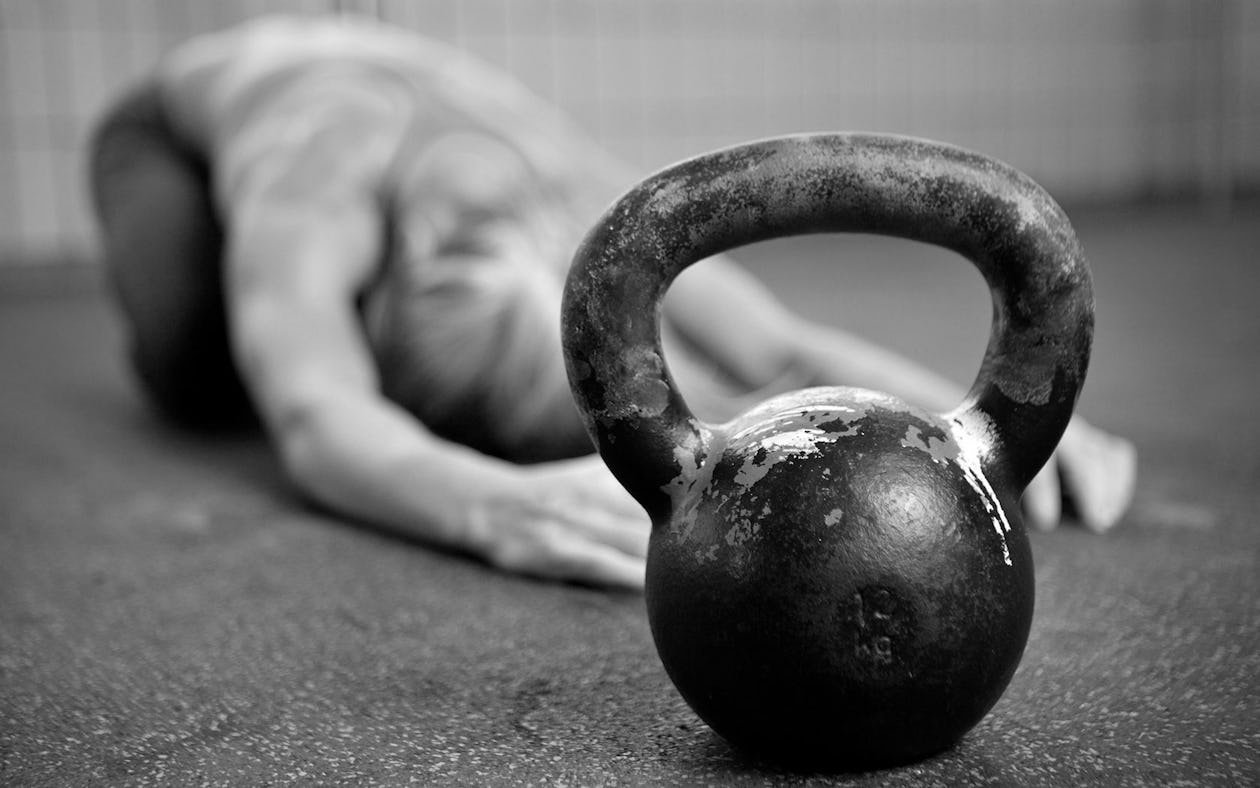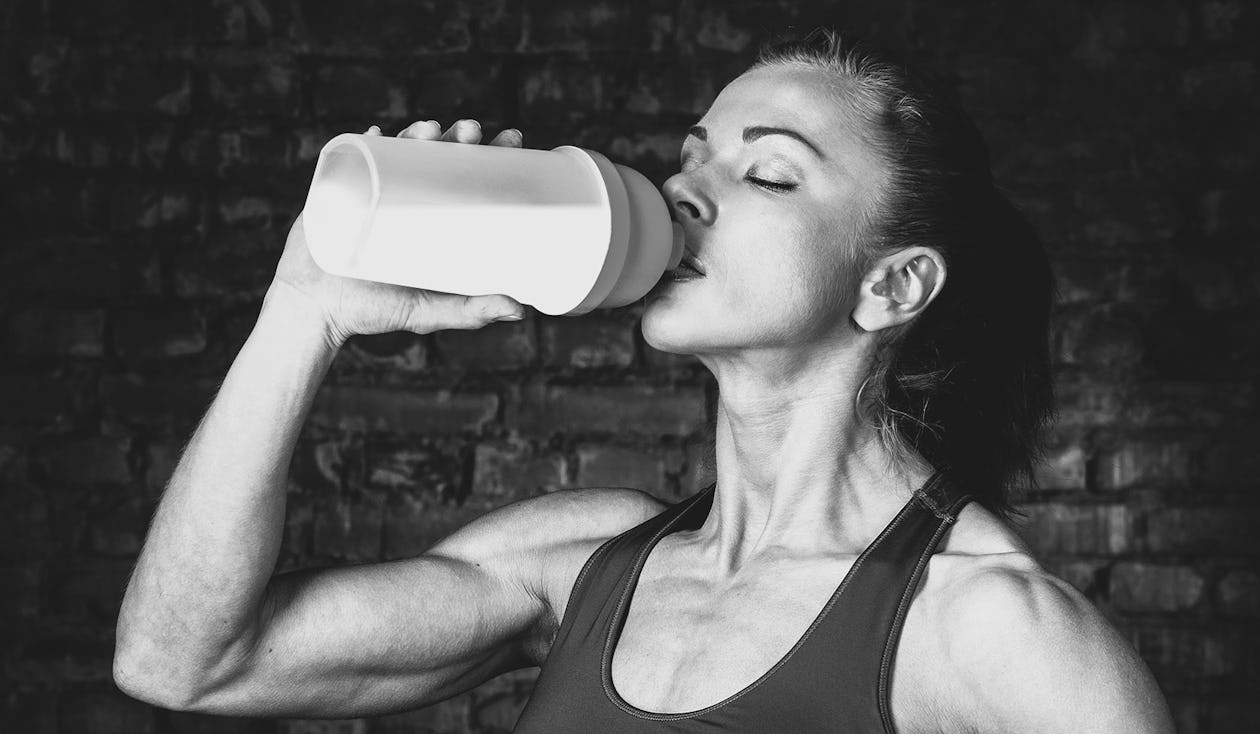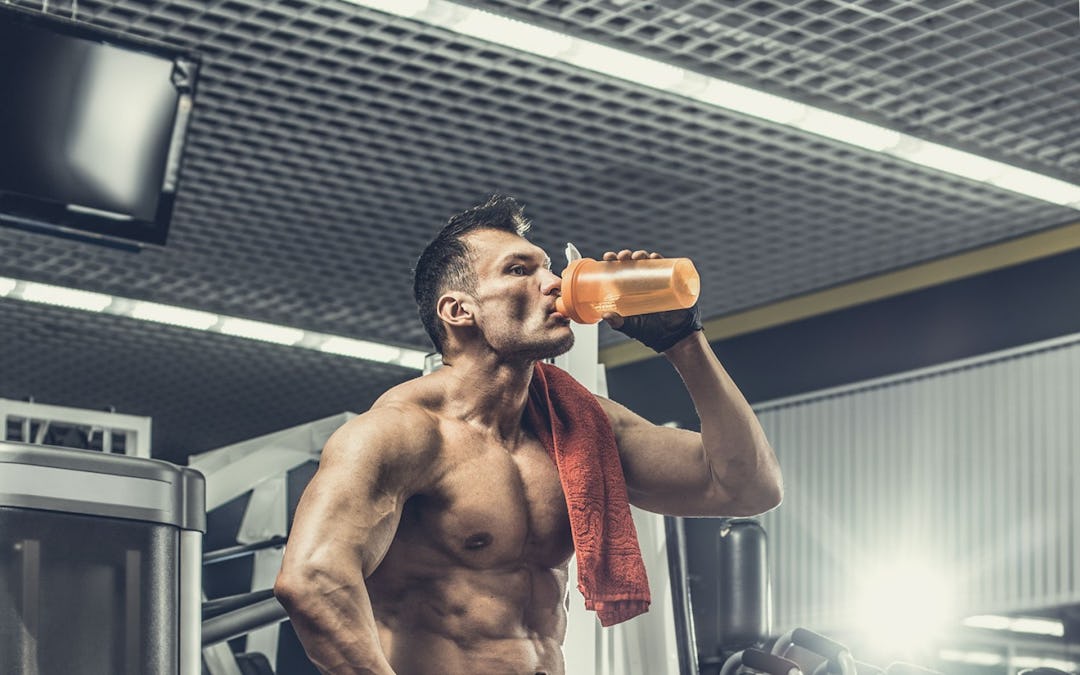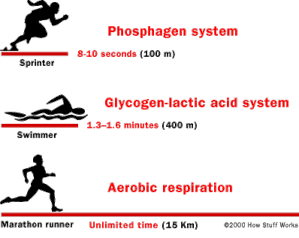You know how most good things in life come with lots of hard work and preparation? Burning calories is no different.
If you want to learn how ATP energy works with the effects of your gym sessions through excess post-exercise oxygen consumption (EPOC), while keeping your inner calorie-burning fire revving for hours post-workout, you need to approach each workout with intention.
Understand You’re Always Burning Calories
First, it’s important to grasp that you’re always burning calories. If you’re sitting on your couch reading this article, you’re burning calories. If you’re sleeping, you’re burning calories. If you’re picking your nose, you’re burning calories.
Granted, you may not be burning a massive number of calories while picking your nose, but you’re certainly burning something.
The reality is, your body is in a state of constant self-maintenance – cells break down, cells generate – these processes require energy in the form of ATP, and calories are a measurement of the energy required to release ATP.
Total Calorie Expenditure is Affected by Many Things

The total number of calories you burn each day is referred to as Total Daily Energy Expenditure (TDEE). Three main elements make up your TDEE:
â Resting Metabolic Rate (RMR) – The number of calories your body burns at rest. This accounts for calories burned while sleeping and while performing basic activity, such as brushing your teeth and typing on your computer, but doesn’t account for calories burned during physical activity or exercise.
â Thermic Effect of Food – This accounts for the number of calories required to break down and assimilate the food you eat into your body.
â Activity – This accounts for the number of calories needed to perform general physical activity (walking around, gardening, picking up the house) and planned bouts of exercise (going to the gym, participating in a race).
Many people don’t realize that RMR accounts for the greatest number of calories burned each day – typically 60-70% of TDEE. Because muscle is more thermically active than fat, one of the best ways to increase your RMR is to gain muscle mass through regular and consistent strength training.
The actual boost to calorie burn is actually relatively small – about 7 calories per day per pound of lean muscle mass (this is a far cry from the often-cited 50 calories per pound muscle mass per day), but the long-term payoff can add up, especially when added to the calorie burn experienced during and post-exercise.
The other two factors affecting TDEE are the thermic effect of food, which is approximately 10% of TDEE, and calories burned during activity, which accounts for about 20-30% TDEE.
Activity is the contributing factor that’s most easily manipulated. This is important because altering your exercise program can significantly affect your daily calorie burn, both during and following exercise, actually enhancing (although not explicitly controlling) your ability to improve your body composition.
Your Calorie Burn Is Not the Same as Anyone Else’s
Total daily calorie burn is also significantly affected by age, sex, height, weight, training status and body composition. If you’re a 21-year-old male who’s 5’8” with 15% body fat, your TDEE is going to be significantly different from a 35-year-old female who’s 5’1” with a 25% body fat percentage.
While most people understand this logically, many seem to forget it functionally. They wonder why their friend leans out easier than them or why their significant other can practically eat a horse and stay lean while they have to be extremely conscientious about food.
The easy answer is: You’re different.
When considering your intra- and post-workout calorie burn, your results are going to be different from other people’s. There are ways to maximize your burn and to stoke your metabolic fire, but you can’t and shouldn’t compare your results to anyone else’s – particularly anyone who is very different from you regarding age, sex, height, weight or training status.
Make Smart Pre-Workout Decisions
Maximizing your calorie burn during and following exercise has a clear link to your nutritional status before your workout.
By consuming a small mixed meal consisting of easily digested carbohydrates and high-quality proteins about an hour before your workout, you’re providing your body with the fuel it needs to keep you going throughout your routine.
This ensures you’ll perform your best – functioning at or near 100% for the duration of your program. You’ll be less likely to hit the proverbial wall or to feel the need to reduce your intensity or cut your workout short because you don’t have the energy to push through.
If you fail to fuel properly before a workout, you’re shortchanging your body’s ability to function at maximum capacity during exercise.
In addition to eating a carbohydrate/protein meal before you exercise (a boiled egg and piece of fruit is a decent option), make sure you also prioritize hydration. Drink water consistently leading up to and throughout your routine.
This is important because all cellular functions take place within water, so failing to hydrate appropriately can slow your body’s metabolism. In fact, performance deficits during exercise can be seen with as little as a 3% decrease in hydration.

Exercise and ATP Energy
I mentioned ATP Energy, but what exactly is it and how does it work? For your muscles – in fact, for every cell in your body — the source of energy that keeps everything going is called ATP. Adenosine triphosphate (ATP) is the biochemical way to store and use energy.
The entire reaction that turns ATP into energy is a bit complicated, but here is a good summary:
â Chemically, ATP is an adenine nucleotide bound to three phosphates.
â There is a lot of energy stored in the bond between the second and third phosphate groups that can be used to fuel chemical reactions.
â When a cell needs energy, it breaks this bond to form adenosine diphosphate (ADP) and a free phosphate molecule.
â In some instances, the second phosphate group can also be broken to form adenosine monophosphate (AMP).
â When the cell has excess energy, it stores this energy by forming ATP from ADP and phosphate.
ATP is required for the biochemical reactions involved in any muscle contraction. As the work of the muscle increases, more and more ATP gets consumed and must be replaced for the muscle to keep moving.
Because ATP is so important, the body has several different systems to create ATP. These systems work together in phases. The interesting thing is that various forms of exercise use different systems, so a sprinter is getting ATP in an entirely different way from a marathon runner!
ATP comes from three different biochemical systems in the muscle, in this order:
1. Phosphagen system.
2. Glycogen-lactic acid system.
3. Aerobic respiration.
Now, let’s look at each one in detail.
Exercise and the Phosphagen System
A muscle cell has some amount of ATP floating around that it can use immediately, but not very much — only enough to last for about three seconds. To replenish the ATP levels quickly, muscle cells contain a high-energy phosphate compound called creatine phosphate.
The phosphate group is removed from creatine phosphate by an enzyme called creatine kinase, and is transferred to ADP to form ATP. The cell turns ATP into ADP, and the phosphagen rapidly turns the ADP back into ATP.
As the muscle continues to work, the creatine phosphate levels begin to decrease. Together, the ATP levels and creatine phosphate levels are called the phosphagen system. The phosphagen system can supply the energy needs of working muscle at a high rate, but only for 8 to 10 seconds.
Exercise and the Glycogen-Lactic Acid System![Boost EPOC & Keep Burning Calories AFTER Your Workout]()
Muscles also have huge reserves of a complex carbohydrate called glycogen. Glycogen is a chain of glucose molecules. A cell splits glycogen into glucose. Then the cell uses anaerobic metabolism (anaerobic means “without oxygen”) to make ATP and a byproduct called lactic acid from the glucose.
About 12 chemical reactions take place to make ATP under this process, so it supplies ATP at a slower rate than the phosphagen system. The system can still act rapidly and produce enough ATP to last about 90 seconds.
This system does not need oxygen, which is handy because it takes the heart and lungs some time to get their act together. It is also handy because the rapidly contracting muscle squeezes off its own blood vessels, depriving itself of oxygen-rich blood.
There is a definite limit to anerobic respiration because of the lactic acid. The acid is what makes your muscles hurt. Lactic acid builds up in the muscle tissue and causes the fatigue and soreness you feel in your exercising muscles.
Exercise and Aerobic Respiration
By two minutes of exercise, the body responds to supply working muscles with oxygen. When oxygen is present, glucose can be completely broken down into carbon dioxide and water in a process called aerobic respiration. The glucose can come from three different places:
â Remaining glycogen supplies in the muscles.
â Breakdown of the liver’s glycogen into glucose, which gets to working muscle through the bloodstream.
â Absorption of glucose from food in the intestine, which gets to working muscle through the bloodstream.
Aerobic respiration can also use fatty acids from fat reserves in muscle and the body to produce ATP. In extreme cases (like starvation), proteins can also be broken down into amino acids and used to make ATP.
Aerobic respiration would use carbohydrates first, then fats and finally proteins, if necessary. Aerobic respiration takes even more chemical reactions to produce ATP than either of the above systems.
Aerobic respiration produces ATP at the slowest rate of the three systems, but it can continue to supply ATP for several hours or longer, so long as the fuel supply lasts.
Exercise and Energy Expenditure to Boost Post-Workout EPOC
To paint the picture, think of it like this: If you want to perform a 100-meter sprint at an all-out effort, you have the immediate energy stores to do so through your anaerobic pathway, but you can only maintain this all-out effort for about 10 to 15 seconds before you have to stop and catch your breath.
This moment of catching your breath is your body’s response to the oxygen debt developed during the sprint.
You have to catch your breath so your aerobic pathway can catch up and produce more ATP while your anaerobic pathway restores its ATP levels.
The beautiful thing is that your body is very smart and efficient. It can alternate between these pathways, even using multiple pathways in tandem based on your exercise intensity.
It’s also important to understand that when you use your anaerobic pathway for energy production, you’re placing your body under greater stress. You probably know this intuitively.
You recognize that sprinting is more challenging than walking and that heavy lifting is more challenging than using pink dumbbells, but the takeaway is that the more stress you place on your body during exercise (within reason, of course), the more oxygen your body will need post-workout to help facilitate recovery.
While it may seem like I just threw a bunch of science jargon at you for no particular reason, understanding the role that intensity plays in post-workout calorie burn is very important.
It’s this post-exercise oxygen consumption in response to physical stress that boosts post-workout calorie burn.
Training to Maximize EPOC Workouts
The “afterburn effect” refers to the number of calories your body burns after a workout as it rests and recovers from the stress you placed on your body during exercise. The more technical term for this effect is EPOC or Excess Post-exercise Oxygen Consumption.
In other words, when your body recovers from exercise, your oxygen consumption is elevated for up to 24 hours. This is because after exercise your body must work to repair muscle damage and to restore cellular function to their pre-exercise levels.
While almost any type of workout can boost EPOC to some degree, workouts that are specifically designed to rely on the anaerobic pathway for energy have been proven to boost EPOC more than those relying on the aerobic pathway alone.
In other words, a 30-minute walk on a treadmill won’t have the same post-workout afterburn as a 30-minute high intensity interval training session.
These are the types of workouts proven to boost EPOC significantly:
1. Strength Training
Particularly any type of training that takes your muscles to exhaustion. For best results, focus on compound exercises that target multiple, large muscle groups.
2. High Intensity Interval Training (HIIT)
Particularly when you work at or close to 100% during your high intensity intervals.
3. Sprint Interval Training (SIT)
This is differentiated from HIIT because the level of intensity is so much greater – often well above 100% VO2 max. In these instances, you can only maintain the effort for 10-20 seconds and you spend longer periods recovering between sprints.
4. Tempo Training
Unlike interval training, during tempo training you sustain an intensity of 70-80% VO2 max for your entire cardiovascular workout of at least 30 minutes. The longer you maintain this level of intensity, the more metabolically taxing it becomes.
5. Circuit Resistance Training
During circuit training, you’re not pushing your muscles to exhaustion during each set, but rather you maintain a high level of intensity throughout with little rest between sets.
If these types of high intensity workouts feel out of your grasp, the good news is that even submaximal interval training has been proven to boost EPOC.
By simply alternating between higher and lower intensities of walking for 30 to 60 minutes, you can enjoy an increased calorie burn of about 7-14% post-workout.
Also, while exercise intensity has a greater effect on EPOC than time spent exercising, there is a linear relationship between exercise length and EPOC.
So if increasing intensity of your workouts is completely out of the question, you can extend the time of your routine to see a modest boost in calorie burn.

Make Smart Post-Workout Food Decisions
It’s important not to overlook the impact of post-exercise nutrition on calorie burn. In addition to fueling up to encourage muscle protein synthesis and to restore muscle glycogen and blood glucose, properly fueling post-workout can help encourage calorie burn.
Focus on eating a high-quality meal within the two hours post-workout that consists of a mix of readily available carbohydrates and high quality proteins.
You may also want to increase fat intake in the hours post-workout. One study published in the American Journal of Physiology found that increasing fat intake to 50% of calorie intake post-workout increased post-exercise calorie burn during sleep by 7.4% compared to a lower fat intake of 20%.
These increases were only seen after exercise was performed, so it’s a significant finding.
Two Final Notes
While boosting post-workout calorie burn is certainly beneficial, it’s not the be-all, end-all of workout goals. Even if you maximize your post-workout burn, you’re still only looking at an additional calorie burn of about 6-15% of your during-workout burn.
In other words, if your workout burned about 400 calories, EPOC would only account for an additional calorie burn of about 24 to 60 calories.
Finally, because human bodies are so freakin’ efficient, the more fit you become, the less significant EPOC becomes.
This is most likely due to faster, more efficient recovery post-workout, particularly if you’re not mixing up your routine or continuing to push yourself. However, don’t let that discourage you.
By building muscle, you increase your Resting Metabolic Rate, thereby increasing your Total Daily Energy Expenditure.
A portion of this article originally appeared at health.howstuffworks.com. If you want to learn more about ATP energy check out this site.



)





